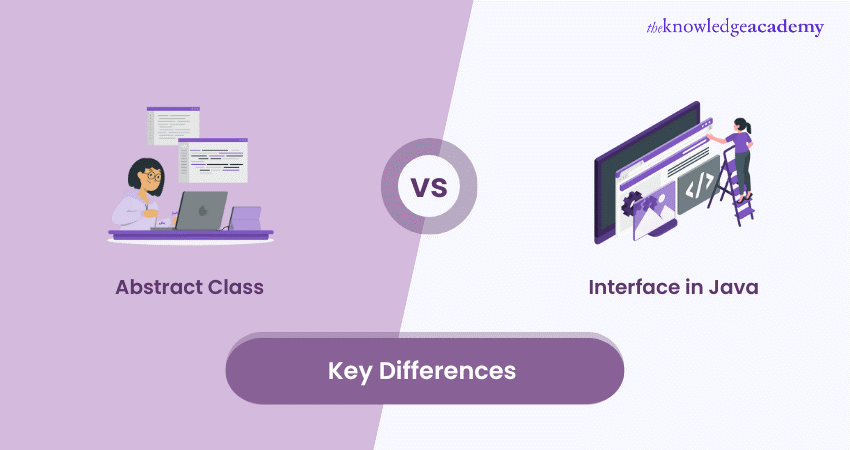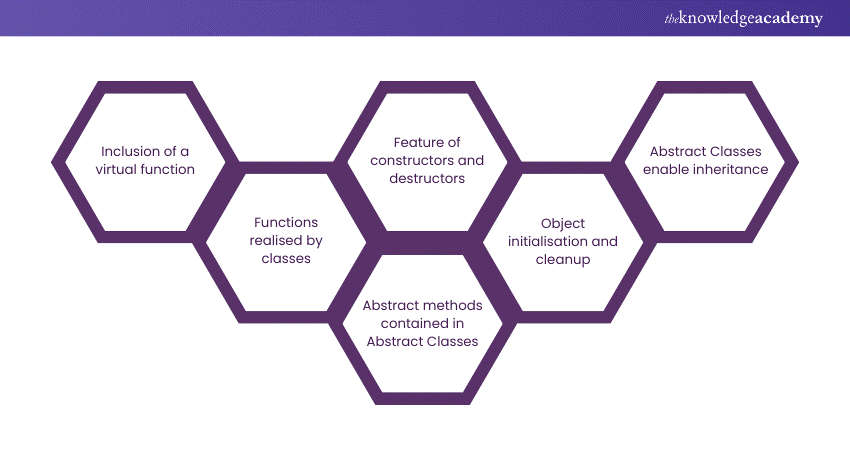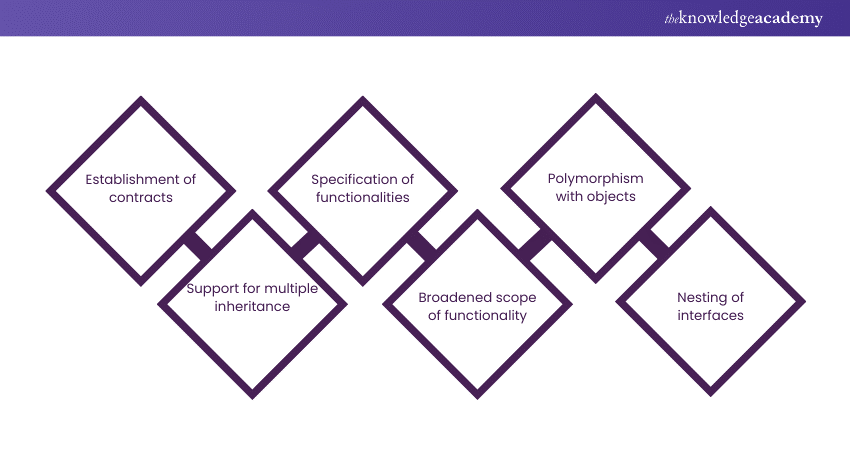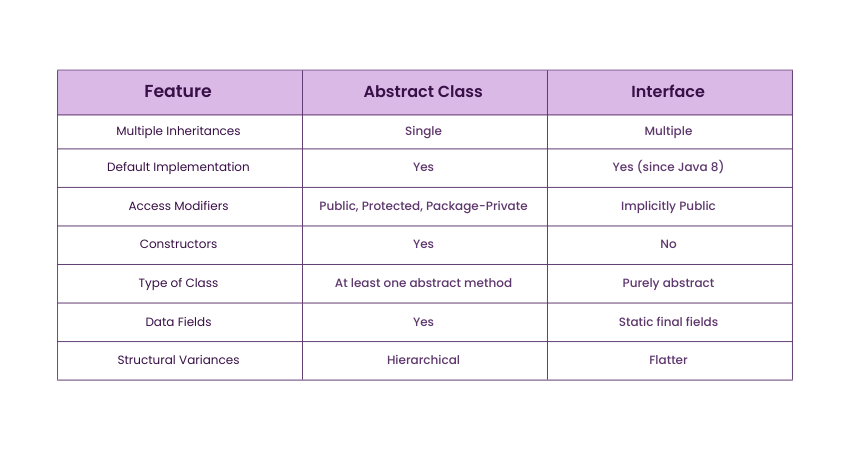We may not have the course you’re looking for. If you enquire or give us a call on + 800 908601 and speak to our training experts, we may still be able to help with your training requirements.
Training Outcomes Within Your Budget!
We ensure quality, budget-alignment, and timely delivery by our expert instructors.

When working with Java Programming, Software Developers must make a crucial decision between using an Abstract Class or an Interface. Both concepts define the structure of classes, each with its own set of features and use cases.
In this blog, we’ll unravel the essential differences between java interface vs abstract class to help you make informed decisions that enhance your Java applications. Join us as we navigate these fundamental concepts in Java. Let's dive in!
Table of Contents
1) What is an Abstract Class?
2) Features of an Abstract Class
3) When to Use Abstract Classes in Java?
4) What is an Interface in Java?
5) Features of Interface in Java
6) When to Use Interfaces in Java?
7) Java Interface vs Abstract Class: Key Differences
8) Conclusion
What is an Abstract Class?
An Abstract Class is identified by the presence of the 'abstract' keyword in its declaration. An essential requirement for an Abstract Class is to include at least one abstract method. Additionally, an Abstract Class can include multiple concrete methods. However, it cannot be directly instantiated to create objects.
Furthermore, Abstraction is a fundamental concept in programming that involves concealing the intricate implementation details while presenting only the essential functionality to the user. It selectively reveals the crucial aspects to the user while concealing the inner workings.
For instance, consider sending an SMS where you input the message and initiate the delivery process. You are unaware of the intricate mechanisms involved in delivering the message, as those details remain hidden from your perspective.
Features of an Abstract Class
An Abstract Class is a special type of class in object-oriented programming that cannot be directly instantiated. Instead, it serves as a blueprint or template for creating other classes. Abstract Classes possess several notable attributes, including:

1) Inability to Directly Instantiate: Abstract Classes lack the capacity for direct instantiation, meaning creating objects from an Abstract Class is impossible.
2) Inclusion of at Least One Pure Virtual Function: A prerequisite for Abstract Classes is the presence of at least one abstract method. These methods lack concrete implementations and must be implemented by any classes derived from the Abstract Class.
3) Coexistence of Abstract and Non-abstract Methods: Abstract Classes can accommodate both abstract methods, requiring implementation in derived classes, and concrete methods, which possess complete implementations and can be directly invoked.
4) Possession of Constructors and Destructors: Similar to other classes, Abstract Classes can feature constructors and destructors, facilitating object initialisation and cleanup.
5) Incorporation of Member Variables: Abstract Classes can integrate member variables, signifying variables belonging to an object of the class.
6) Applicability as a Base Class: Abstract Classes can serve as the foundation for other classes, enabling inheritance by other classes. This inheritance empowers specific implementations in each derived class.
When to Use Abstract Classes in Java?
Abstract Classes in Java are best used to define a common base for related classes while providing some shared implementation. They are ideal when you want to enforce a contract that subclasses must adhere to, allowing for both abstract methods (to be implemented by subclasses) and concrete methods (with default behaviour).
Use Abstract Classes when you have a commonality among classes that extends beyond method signatures, as they can hold states and provide shared functionality, unlike interfaces. This approach helps in promoting code reusability and enhances maintainability in complex systems.
Additionally, Abstract Classes are instrumental in scenarios where you anticipate future expansion of your class hierarchy. By defining an Abstract Class, you can introduce new subclasses without altering the existing codebase, adhering to the open-closed software design principle. This flexibility allows developers to introduce new features or variations without extensive refactoring.
Furthermore, when certain methods must have a default implementation while others remain abstract, Abstract Classes provide a balanced approach, combining abstraction with concrete behaviour. This makes them a powerful tool for designing robust and scalable Java applications.
Master advanced Java engineering skills with our Java Engineer Training- join now!
What is an Interface in Java?
In Java, an Interface is a fundamental concept that plays a crucial role in achieving abstraction and defining contracts for classes. Essentially, an Interface can be considered a blueprint for classes, specifying a set of methods that must be implemented by any class that claims to implement the Interface.
Moreover, Interfaces in Java are a powerful mechanism for defining a contract that classes must fulfil, promoting code reusability, flexibility, and a clear separation of concerns in object-oriented programming. They facilitate the creation of robust, maintainable, and extensible Java applications.
Here are the key aspects that define the concept of an Interface in Java:
1) Abstraction and Contracts: An Interface defines a contract or a set of rules that classes must adhere to. It outlines the methods that implementing classes must provide, ensuring a consistent structure and behaviour across various parts of a program.
2) Method Signatures: Interfaces contain method signatures, which include the method name, return type, and parameters, and they do not include method bodies or implementations. This enforces a clear separation of Interface and implementation.
3) Implementation by Multiple Classes: One of the significant advantages of Interfaces in Java is that a class can implement multiple Interfaces. This allows for achieving multiple inheritance of behaviour, which is not possible with classes.
4) Loose Coupling: Implementing an Interface promotes loose coupling between classes, making the code more modular and maintainable. Furthermore, it allows different classes to interact based on a common contract rather than being tightly bound to specific implementations.
5) Public Access: All methods declared in an Interface are implicitly public and abstract, meaning they can be accessed by any class implementing the Interface.
Features of an Interface in Java
Interfaces are crucial in Java, to champion abstraction, polymorphism, and adaptable software architecture. For developers with an expert eye, understanding their intricacies unlocks potent development paradigms. Below are the fundamental attributes of Java Interfaces, dissecting their functionality and potential applications:

1) Embodiment of Abstraction: Interfaces establish contracts, specifying functionalities without divulging implementation details. This decoupling promotes modularity and the reuse of code. Abstract methods declare "what" needs to be done, leaving the "how" to the classes that implement the Interface. Concrete methods (introduced in Java 8) offer optional default implementations, enriching the contract without compromising flexibility.
2) Unleashing Polymorphism: Interfaces empower polymorphism, allowing objects of diverse classes that implement the same Interface to be treated uniformly. Collections can hold references to various implementing classes, simplifying code that operates on the shared functionalities defined by the Interface. Runtime binding permits the dynamic selection of implementations based on the actual object at runtime, enhancing adaptability and dynamic behaviour.
3) Enabling Multiple Inheritance: Unlike classes, Java Interfaces support multiple inheritance, allowing a class to implement multiple Interfaces and provide implementations for their methods. This broadens the scope of a class's functionalities, promoting code reusability and consolidating shared behaviours among different components. Prudent design is essential to avoid conflicts or ambiguities from overlapping methods in inherited Interfaces.
4) Defining Static constants: Interfaces can declare static final fields, serving as shared constants accessible from all implementing classes and throughout the application. These constants ensure consistent values for configurations, error codes, or version information, fostering stability and code clarity. Static methods can also find a home within Interfaces, offering utility functions shared by all implementing classes.
5) Granularity through Nested Interfaces: Interfaces can nest other Interfaces, establishing a hierarchical organisation of functionalities. Nested Interfaces refine the parent Interface, supplying additional specialised methods or restricting access to nested methods. This hierarchical structure encourages modularity and code organisation, especially for intricate functionalities with layered levels of Abstraction.
6) Identification via Marker Interfaces: Marker Interfaces lack methods and function solely as tags to categorise classes. They impose minimal overhead but prove potent for filtering, querying, or implementing custom sorting based on the Interface tag. For instance, the Serialisable Interface distinguishes classes for object serialization without introducing additional methods.
7) Conciseness with Lambda expressions: Since Java 8, Interfaces can harness lambda expressions to offer concise, anonymous implementations of their methods. This elevates code brevity and simplifies logic in scenarios requiring brief, functional implementations. Lambda expressions within Interfaces find utility in event listeners, comparator functions, or any situation demanding lightweight, on-the-fly implementations.
Build seamless Java Desktop Applications- kickstart your Java Swing Development Training today!
When to Use Interfaces in Java?
Interfaces in Java are ideal when you want to define a contract for classes that can implement multiple behaviours without enforcing a specific class hierarchy. They are instrumental in situations requiring polymorphism, allowing different classes to be treated interchangeably. Since Java supports multiple inheritance through interfaces, you can design flexible systems where a class can implement multiple interfaces, promoting greater modularity and code reuse.
Moreover, interfaces should be used when defining methods that must be implemented by any class that claims to support that interface. This is particularly effective in APIs and frameworks where you want to ensure that any implementing class provides specific functionality.
By using interfaces, you promote a clear separation of concerns, enabling the creation of loosely coupled components that can evolve independently. This approach not only enhances maintainability but also allows for easier testing and implementation of various algorithms or behaviours across diverse classes.
Java Interface vs Abstract Class: Key Differences
Both Java Interface and Abstract Class play a crucial role for Abstraction. Abstract Classes can provide partial implementation and serve as base classes for inheritance, while Interfaces define contracts that implementing classes must fulfill. Below, we have listed the key differences between them:

1) Multiple Inheritances
An abstract class supports single inheritance, meaning a class can extend only one abstract class. In contrast, an interface supports multiple inheritance, allowing a class to implement multiple interfaces.
2) Default Implementation
An Abstract Class can have the methods for Abstract Classes, which lack implementation, and concrete methods, which provide default implementations. On the other hand, interfaces can contain abstract methods and, since Java 8, may also include default implementations for these methods.
3) Access Modifiers
Abstract Classes can utilise public, protected, or package-private access modifiers to control the visibility of their methods and fields. In comparison, interface methods are implicitly public, and access modifiers do not apply to interface methods or fields.
4) Constructors or Destructors
Abstract Classes can have constructors for initialisation purposes, but they cannot have destructors. Conversely, interfaces cannot have constructors or destructors at all.
5) Usage of the Abstract Keyword
The abstract keyword is used to define both abstract methods and Abstract Classes in Java. In contrast, the abstract keyword is not applicable when declaring an interface, as it is specifically used for abstract methods in Abstract Classes.
6) Type of Class
Abstract Classes can be standalone classes, but they must contain at least one abstract method to qualify as abstract. In contrast, interfaces are purely abstract types and cannot be instantiated.
7) Performance Speed
Abstract Classes tend to be slightly faster due to their direct method invocation and reduced method lookup overhead. In contrast, interfaces may be slightly slower because they involve method lookup and dynamic method binding.
Build Enterprise Applications with Java EE – join our Introduction to Java EE Training now!
Conclusion
Understanding the distinctions between Java Interface vs Abstract Class is paramount for modern-day developers. Both serve as indispensable tools for crafting modular and flexible code. Java Interfaces offer strict contracts, and Abstract Classes provide shared implementation. Attaining proficiency in these concepts equips developers to design elegant and robust software solutions efficiently and with seamless precision.
Create scalable Java Web Solutions with our Web Development Using Java Training- register now!
Frequently Asked Questions

You can use Abstract Classes when you want to provide shared implementation and create a hierarchical class structure. In contrast, interfaces are preferable for defining contracts unrelated classes, further promoting flexibility and multiple inheritance.

Abstract Classes tend to be slightly faster than Interfaces because they allow direct method invocation and involve less method lookup overhead. Interfaces, on the other hand, involve method lookup and dynamic method binding, which can introduce a slight performance overhead.

The Knowledge Academy takes global learning to new heights, offering over 30,000 online courses across 490+ locations in 220 countries. This expansive reach ensures accessibility and convenience for learners worldwide.
Alongside our diverse Online Course Catalogue, encompassing 17 major categories, we go the extra mile by providing a plethora of free educational Online Resources like News updates, Blogs, videos, webinars, and interview questions. Tailoring learning experiences further, professionals can maximise value with customisable Course Bundles of TKA.

The Knowledge Academy’s Knowledge Pass, a prepaid voucher, adds another layer of flexibility, allowing course bookings over a 12-month period. Join us on a journey where education knows no bounds.

The Knowledge Academy offers various Java Courses, including JavaScript for Beginners, Hibernate Training, Java Swing Development Training, and Java Engineering Training. These courses cater to different skill levels, providing comprehensive insights into Arrays in Java.
Our Programming & DevOps Blogs cover a range of topics related to Java Programming, offering valuable resources, best practices, and industry insights. Whether you are a beginner or looking to advance your Programming & DevOps skills, The Knowledge Academy's diverse courses and informative blogs have you covered.
Upcoming Programming & DevOps Resources Batches & Dates
Date
 Java Programming
Java Programming
Mon 6th Jan 2025
Mon 17th Mar 2025
Mon 12th May 2025
Mon 7th Jul 2025
Mon 15th Sep 2025
Mon 3rd Nov 2025
Mon 15th Dec 2025







 Top Rated Course
Top Rated Course



 If you wish to make any changes to your course, please
If you wish to make any changes to your course, please


